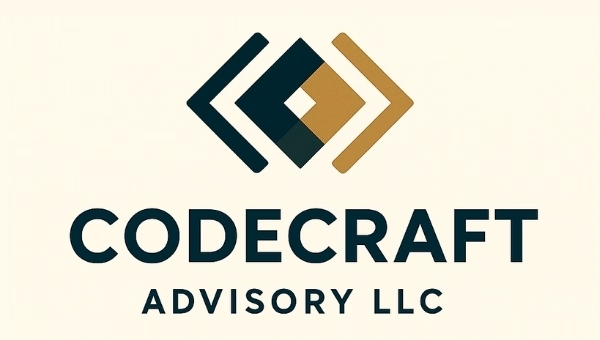Blog
The Ultimate Guide to Customer Service Training for Hotels and Restaurants

Customer Service Training for Hotels and Restaurants
Introduction
Hospitality lives in the details. For hotels and restaurants, the difference between a forgettable visit and a lifelong guest is how team members connect, solve problems, and deliver consistent service. This guide outlines a complete, practical program for Customer Service Training for Hospitality — from onboarding to advanced coaching — so your staff can turn everyday interactions into unforgettable experiences.
Why Customer Service Training for Hospitality Matters
- Guest loyalty and reviews: Exceptional service increases repeat business and positive online reviews, which are vital in highly competitive markets.
- Revenue impact: Upselling, personalized recommendations, and smooth service flow boost average check size and room-night value.
- Employee retention: Clear training reduces burnout, aligns expectations, and improves job satisfaction.
- Brand consistency: Training ensures every guest receives the same level of hospitality, regardless of staff or shift.
Core Principles of Effective Hospitality Training
- Empathy-first: Teach employees to see situations from the guest’s perspective.
- Consistency over charisma: Systems and standards produce reliable experiences even when personalities differ.
- Empowerment within guardrails: Staff should be able to solve problems fast without breaking brand rules.
- Measurable outcomes: Tie training to KPIs so progress is visible and improvable.
Designing Your Training Program: Step-by-Step
- Conduct a skills and needs audit
- Review guest feedback, mystery shopper reports, and operational pain points.
- Map critical guest journeys (arrival, dining/order, room service, check-out).
- Identify role-specific skill gaps (front desk vs. servers vs. housekeeping).
- Define learning objectives
- Examples: “Handle check-in within 3 minutes with 95% accuracy,” or “Resolve 90% of guest complaints at first contact.”
- Use SMART objectives (Specific, Measurable, Achievable, Relevant, Time-bound).
- Build modular content
- Core module: Brand values, hospitality mindset, guest privacy and safety.
- Role modules: Front desk protocols, reservation handling, restaurant sections, bartending etiquette, housekeeping standards.
- Situational modules: Handling complaints, late arrivals, allergen protocols, cultural sensitivity.
- Skills modules: Active listening, upselling with integrity, conflict de-escalation, digital check-in/out.
- Select training methods
- Microlearning: Short videos and quizzes for standards and SOP refreshers.
- Instructor-led sessions: Role-play and scenario work for soft skills.
- Shadowing and mentoring: New hires shadow experienced staff for real-time modeling.
- E-learning LMS: Track completion, integrate knowledge checks, and issue certificates.
- On-the-job coaching: Managers provide immediate feedback after shifts.
- Create assessment and certification
- Use knowledge tests, observed role-plays, and mystery guest assessments.
- Offer levels (e.g., Certified Guest Host, Senior Service Ambassador) to motivate progression.
- Onboarding blueprint (first 30/60/90 days)
- Day 1–3: Brand orientation, tour, meet-and-greet, basic SOPs.
- Week 1: Role shadowing, simple transactions, microlearning modules.
- Month 1: Independently handle basic duties with mentor oversight and first assessment.
- Month 2–3: Advanced scenarios, upselling practice, cross-training opportunities, final certification.
Training Content Essentials and Example Scripts
Greeting and First Impressions
- Script prompt: “Good morning, welcome to [Property/Restaurant]. My name is [Name]. How can I make your visit exceptional today?”
- Teach tone, eye contact, name usage, and personalization cues.
Handling Complaints — Recovery Recipe
- Listen actively: “I understand, thank you for telling me.”
- Apologize sincerely: “I’m very sorry this happened.”
- Offer a solution: “Here’s what I can do right now…”
- Follow-through: Record the incident and ensure resolution within a specified timeframe.
Upselling Without Pressure
- Teach suggestive, benefit-focused language: “If you’d like, our chef’s special pairs perfectly with a Riesling that complements the seafood flavors.”
- Use timing and guest cues — never push.
Role-Playing Scenarios (examples)
- Overbooked hotel with arriving VIP guest.
- Dinner service with an allergy emergency.
- Late check-out request from a family with a young child.
Measurement: KPIs and Evaluation
- Guest satisfaction scores (CSAT, Net Promoter Score, review ratings).
- First-contact resolution rate for complaints.
- Average check/room revenue influenced by upselling.
- Time-to-service metrics (check-in time, order-to-table time).
- Employee training completion and retention rates.
- Mystery shopper results and quality audits.
Technology and Tools That Help
- Learning Management Systems (LMS) for structured courses and tracking.
- Mobile microlearning platforms for quick refreshers during shifts.
- Guest feedback tools (post-stay surveys, in-app feedback).
- Scheduling and staffing systems that integrate training status to allocate mentors.
- CRM or PMS tags to record guest preferences for personalization.
Culture, Diversity, and Accessibility
- Train on cultural sensitivity and local customs to serve international guests respectfully.
- Include accessibility awareness and ADA-aligned service approaches.
- Encourage multilingual basics or translation support for common guest languages.
Manager and Leader Roles
- Managers must coach, not just audit. Replace “did you follow protocol?” with “show me how you handled X yesterday.”
- Hold regular service huddles to share updates, praise wins, and surface persistent issues.
- Use incentive programs that reward demonstrated skills and guest-centered behaviors.
Common Pitfalls and How to Avoid Them
- Overloading new hires: Favor phased, repeatable learning over information dumps.
- Ignoring frontline feedback: Involve staff in refining SOPs and training content.
- Focusing only on theory: Balance knowledge with practical, supervise-able skills.
- No reinforcement: Use regular refreshers and seasonal re-certifications.
Sample 30-Point Training Checklist (high-level)
- Brand values covered
- Greeting script practiced
- Check-in/out demo complete
- Complaint handling practiced
- Upsell techniques practiced
- At least 3 role-play scenarios completed
- SOPs for safety and allergies reviewed
- Technology (POS/PMS) account established
- Mentor assigned
- First assessment scheduled
Budgeting and Time Investment
- Estimate initial curriculum build vs. annual refresh costs.
- Balance in-person hours (higher impact) with scalable e-learning (lower long-term cost).
- Factor in lost labor hours for training and plan peak-coverage accordingly.
Continuous Improvement and Feedback Loops
- Use guest feedback and staff suggestions to revise scripts and SOPs quarterly.
- Run A/B tests on service variations (e.g., welcome amenity vs. personalized note) and measure impact.
- Celebrate improvements publicly to reinforce positive behaviors and retention.
Conclusion
Customer Service Training for Hospitality is an investment with high returns: happier guests, stronger reviews, higher revenue, and more engaged employees. A successful program blends empathy-led culture, role-specific skills, measurable outcomes, and continuous reinforcement. Start with clear objectives, train with purpose, measure relentlessly, and empower your teams to act on what they learn.
Appendix: Quick Start Actions
- Run a 2-week skills audit and gather top 10 guest complaints.
- Build a 5-video microlearning pack for core standards.
- Train managers in coaching techniques and schedule weekly 15-minute huddles.
- Launch a mystery-guest check after 90 days to validate results.
Let’s make your business unforgettable.
📩 Contact us today for a free consultation!
